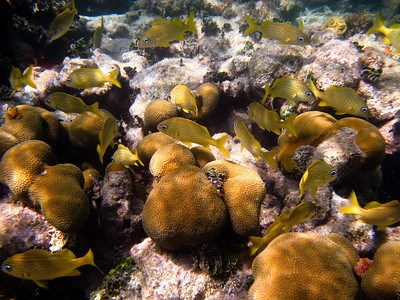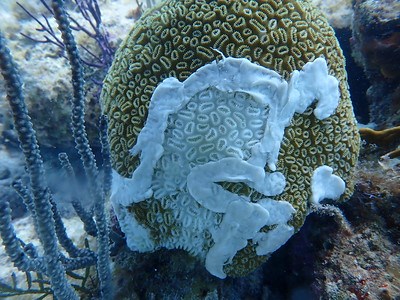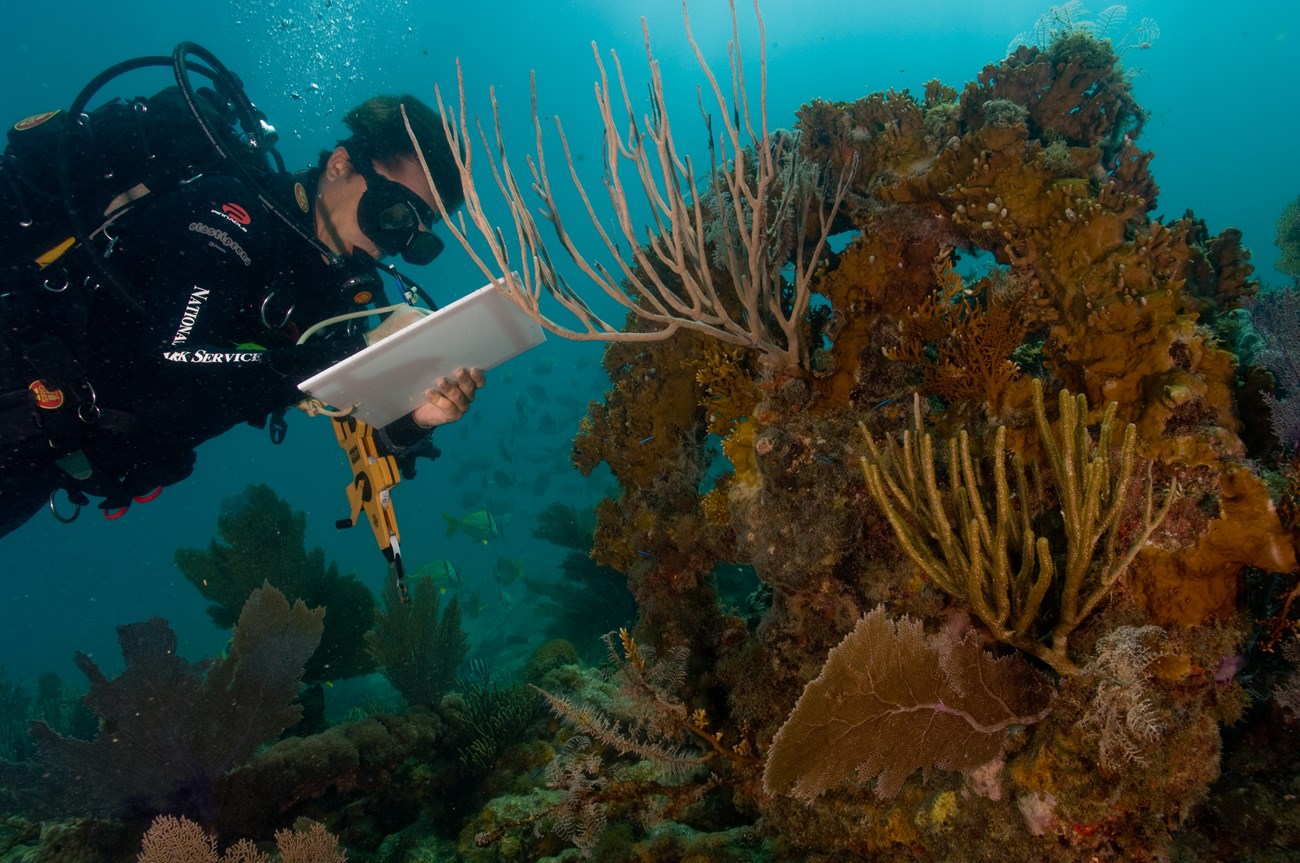
NPS photo by John Dengler The coral reefs of Dry Tortugas National Park harbor a rich and colorful variety of marine life such as fish, lobsters, sponges, sea stars, and anemones. Clear waters with excellent visibility attract snorkelers and SCUBA divers to the park, which offers some of the best underwater viewing opportunities in the United States. The park is home to about 30 species of coral. Corals are marine organisms that typically live in colonies consisting of many individual soft-bodied organisms called polyps, each only a few millimeters in diameter. After a polyp attaches itself to a hard substrate on the sea floor, it divides itself into thousands of clones. The polyps cement themselves to each other by secreting a skeleton of calcium carbonate, thereby creating a colony that acts as a single organism. Over the course of hundreds to thousands of years, the colonies join together to form reefs. 
NPS photo by Rachel Johns By themselves, coral polyps are translucent and colorless. But they host billions of colorful zooxanthellae, a type of algae that gives corals their vivid colors. These zooxanthellae also provide corals additional nutrients. Physical stress, such as temperature change or pollution, causes the zooxanthellae to die and the corals to lose their color, thereby exposing the white of the coral’s calcium carbonate skeleton. Dying zooxanthellae result in coral bleaching, a process that can kill entire colonies of coral if environmental conditions do not improve. Although corals grow in tropical waters throughout the world, the reefs in southern Florida grow at the northernmost extent of their limit. Like other corals, they are susceptible to impacts from other adverse conditions, such high sea water temperatures and pollution. 
NPS photo (Submerged Resource Center) Dry Tortugas National Park biologists monitor the health and size of coral colonies and correlate the data with environmental conditions, which are constantly changing. The park is home to nine species of threatened coral:
|
Last updated: April 29, 2024
